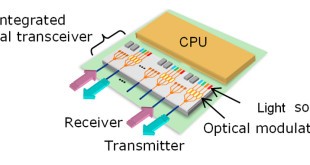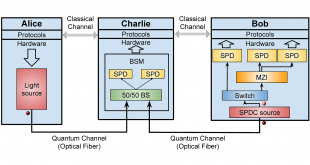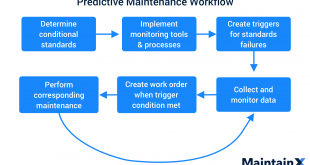Parallelism – or the act of several processors simultaneously executing on an application or computation – has been increasingly embraced by the microelectronics industry as a way of sustaining demand for increased system performance. Today, parallel computing architectures have become pervasive across all application domains and system scales – from …
Read More »Nuclear Power and storage technologies for marine Propulsion and floating nuclear power plants
The International Energy Agency’s has found that the accelerating demand for electricity – due to a growing global population and rising levels of affluence – is on course to outpace the growth of renewable energy and increase reliance on fossil fuels. The International Maritime Organization has adopted mandatory measures …
Read More »DARPA SIGMA+ using advanced intelligence analytics to detect chemical, biological, and explosives threats
Since the invention of nuclear power, there have been numerous “accidents.” From Three Mile Island and Chernobyl to the more recent problems in Fukushima, it would seem nuclear power is not fully under our control. Recently a Chinese scientist has warned that the single mountain under which North Korea most …
Read More »Perovskite quantum dots attractive for LED displays, quantum dot solar cells and single photon emitter
In the past few years, metal halide perovskite quantum dots and nanocrystals have been extensively explored due to their unique optoelectronic properties and extensive application prospects. Perovskites are materials that share a crystal structure similar to the mineral called perovskite, which consists of calcium titanium oxide (CaTiO3). Depending on which …
Read More »Stealth ships
A stealth ship is a type of ship which is especially used as a war vessel and is concealed from the navy vessels of other countries. It is an important warfare tactic that is used by nations wide across the world. Since they are invisible but the opposite navy vessels …
Read More »Quantum dot based Quantum communications networks
Quantum technologies have the potential to spur revolutions in computing, sensing, cryptography and beyond. Quantum computing and quantum communication are believed to be the future of information technology. Single-photon sources are important for current research in quantum information, cryptography, and the production of truly random numbers. The possibility of …
Read More »Crime reduction, prevention and response is being bolstered though 5G, data analytics and AI tools
Criminal activity continues to be a major concern in modern civilisations, with most nations facing unacceptable levels of crime and delinquency. The results show that African and Latin American countries suffer from the highest levels of various types of crime across the board, followed by countries in Asia. European, North American …
Read More »Armies Investing in Predictive Maintenance Technology
Logistics is often referred to as the “sinews of war”, linking forward-deployed units with support elements to ensure they are supplied, maintained and ready for the next operation. There is a saying in military circles – made famous by US Marine General Robert H Barrow – that amateurs study tactics, …
Read More »Self-healing materials for automatic repair of smartphones, soft actuators and robots to spacecrafts
Generally, materials will degrade over time due to fatigue, environmental conditions, or damage incurred during operation. Repair of certain materials during their lifecycle (especially those with structural functions such as concrete) can be very expensive and labour intensive. Therefore Scientists began developing self-healing materials , those artificial (synthetic) substances that …
Read More »Novel materials for 3D printing enabling high-performance parts optimized for strength, stiffness, and damage tolerance.
3D printing or additive manufacturing is ongoing revolution in manufacturing with its potential to fabricate any complex object and is being utilized from aerospace components to human organs, textiles, metals, buildings and even food. 3D printing is also revolutionizing defence by printing small components to full drones on naval vessels, …
Read More » International Defense Security & Technology Your trusted Source for News, Research and Analysis
International Defense Security & Technology Your trusted Source for News, Research and Analysis









